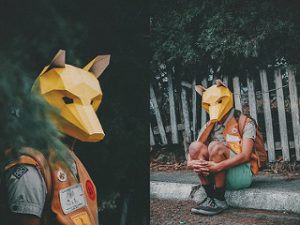Content: Describe what it is you will teach. What is the content?
I will introduce students to the concept of diptychs. We will look at examples of diptych photographs (https://www.flickr.com/groups/dyptichs/pool/) and have a discussion around the stories that a few of them tell. Then students will practice creating their own simple diptychs by drawing from reference images in magazines.
Learning Goal(s): Describe what specifically students will know and be able to do after the experience of this class.
Students will be able to define what constitutes a work of art to be considered a diptych. They will be able to identify various kinds of diptychs that other artists have created as well as be able to create their own simple diptychs that utilize basic geometric shapes. Students will be able to demonstrate a sense of space in their diptychs that rely on their knowledge of shape.
Rationale: Explain how the content and learning goal(s) relate to your Curriculum Unit Plan learning goals.
Students will be able to further their skills in identifying simple geometric shapes in 3D objects. They were introduced to the concept of drawing 3D objects as simple geometric shapes earlier in the year and now will be able to apply that knowledge to creating collages. They will also continue to develop their skills in creating composition by working with various types of collages.
Assessment: Describe how you and your students will know they have reached your learning goals.
Students will create a diptych demonstrating the collage method that alters a reference photo in two ways (using construction paper for color and shape, then using magazine cut outs for texture). Their collages will utilize various geometric shapes for their objects and as many textures as possible.
Personalization and equity: Describe how you will provide for individual student strengths and needs. How will you and your lesson consider the needs of each student and scaffold learning? How specifically will ELL students and students with learning disabilities gain access and be supported?
I will have the definition of diptych written on the board for ELL students to read at their own pace as I verbally explain the concept. This visual aid will be written with color coding to differentiate the word from the definition from the Greek roots to help students with disabilities engage with the concept via multiple inputs. I will also employ the “I do, we do, you do” strategy when modeling how to extract shapes from the magazine images students will use for practice. I will break down the drawing practice into small steps and model each step before allowing students to try it for themselves: first students will find an image, next they will draw two rectangles on a blank sheet of paper, then they will sketch as much detail as they can of the image in the first box, finally they will redraw the same image using simple geometric shapes in the second box. At any point, I will allow extra time to complete each step for those students who need it.
Activity description and agenda: Describe the activities that will help your students understand the content of your class lesson by creating an agenda with time frames for your class. Be prepared to explain why you think each activity will help students on the path toward understanding.
Day 1: I will introduce students to the concept of diptychs. We will look at diptychs online and I will facilitate a conversation around each example image about the story it could be telling viewers. Then I will model how to draw diptychs from reference images in magazines, utilizing the “I do, we do, you do” method. Students will practice drawing diptychs of a few different reference images, focusing on converting the images into a composition of simple geometric shapes.
Day 2: Students will continue to practice drawing diptychs of a few different reference images.
What particular challenges, in terms of student learning or implementing planned activity, do you anticipate and how will you address them?
I anticipate that students will struggle to abstract the reference images from magazines into simple geometric shapes. They may get stuck with the notion of recreating all the details with geometric shapes instead of simplifying the image. I will model how I want students to recreate the images into diptychs, utilizing the “I do, we do, you do” method. I will also have them practice drawing diptychs using various kinds of images, as some images may be easier to recreate into a composition of geometric shapes than others (e.g., advertisements with objects vs. portraits), I will walk around the room as students are working and converse with individual students to help them with their diptychs (i.e., draw a sketch of their individual image as I explain the process of simplifying the image into geometric shapes).
List the Massachusetts Learning Standards this lesson addresses.
1.9 Demonstrate the ability to create 2D and 3D works that show knowledge of unique characteristics of particular media, materials, and tools
2.15 Create artwork that demonstrates understanding of the elements and principles of design in establishing a point of view, a sense of space, or a mood
Below are some examples of photography diptychs from the flickr website I used during the lesson:





